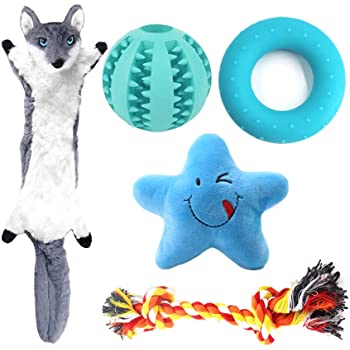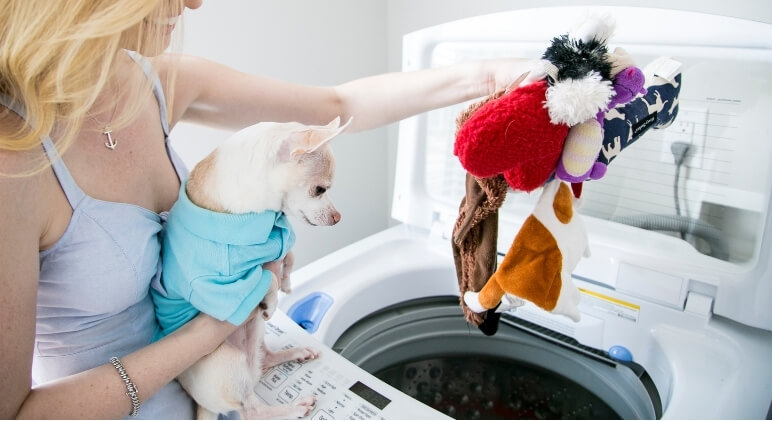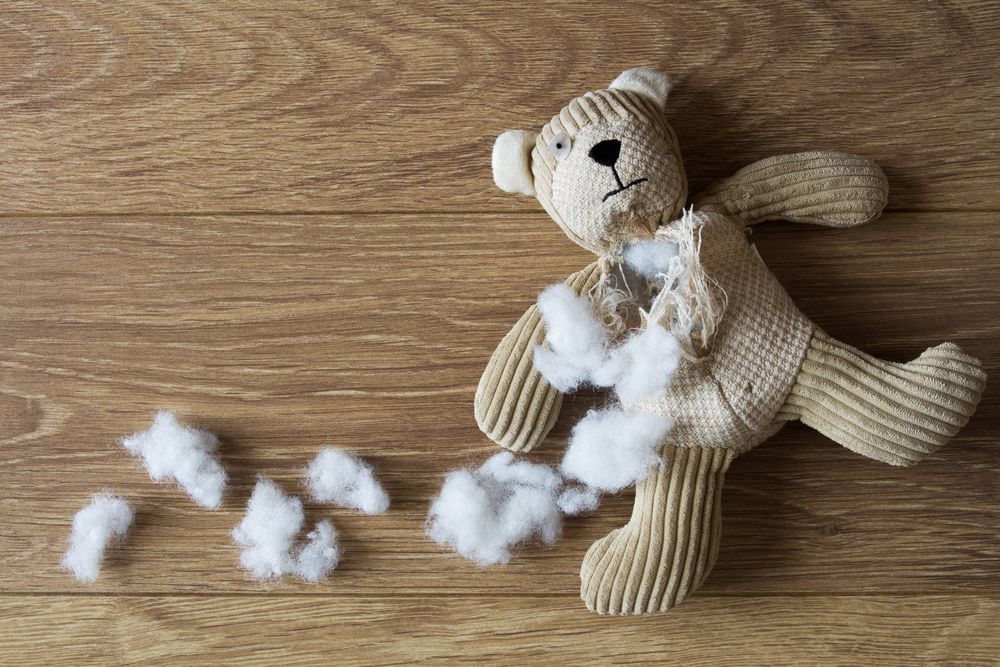
Spring-cleaning is a chance to refresh your space, start anew, and better yourself (and your pets!). Outside of renewing your first aid kit and throwing away damaged dog supplies, I want you to take a look at your toy bin. Is it sitting in the corner, full to the brim, and untouched?
If you answered yes and are wondering why…I have your answer: Dogs like new things. They crave them. New smells, new experiences, new friends. They thrive on change and can fall into a rut without it. Like all of this year, we’ve been deprived of new things and that toy bin is *like* soooo old. This is a very probable reason for why your toys are untouched. This preference for novelty is called neophilia and I’m here to give you two ideas to provide the best “OOH that’s a new shiny thing” experience for your pup.
The Power of Rotation
This is the most important tool we can offer you today: Rotate your dog’s toys weekly by making only 4-5 toys available at any time!
Pick one or two days of the week to rotate your toys out. Remove the first batch of toys and put them away in a safe spot out of sight of your pup. Next, pick a few new ones, placing them in the bin you just emptied, and watch your pup go wild. Old toys will be rotated back into sight as somewhat “new”. You can even add a new scent to the toys, by rolling them in grass, adding food items to rubber toys or finding another way to change their smell to entice your pup.
Rotation puts the power back in your hands and playtime becomes more of a two-person game. Your pup will look forward to the weekly switchero and you’ll both benefit from the release of energy playtime will offer you again. Instead of your pup initiating the play, you are. Some toys can even be reserved, and kept out of rotation, for special fancy games (like tug) or just to be played with hoomans (like fetch with a good ‘ol tennis ball).
Change It Up
You’ve started to rotate your toys out, but which toys make the cut? You can’t offer a new color tennis ball each time and call it new. You want a variety of play options every time you refresh the toy bin. Just like “new items”, your pup likes “new objectives”. Give options to your pup; start with one to carry, kill, roll, and baby (some toys may fit into multiple categories).
Carry: These are toys your dog wants to pick up and carry around. They tend to be smaller in size and something comforting to them. For my pup, this is his Kong. He will run to find it anytime I return home and carry it around for a short time. For example, these “carrying” toys can be (and not limited to): soft toys, stuffed toys, or treat dispensing balls you leave before you exit the home. These are frequently similar to “Baby” style toys.

Kill: These are toys your pup wants to dive into. They allow them to take out energy and release their primal instinct. Majority of these “kill” toys are your typical chew toys. However, in the case of certain dogs, they love to tear a good stuffed, squeaker toy to shreds. Tug toys also fit in this category.
Roll: These are toys they can chase, push, and fetch. Dogs have a natural instinct to chase things. In the past, dogs were trained in the art of chasing for hunting. Today, our pups still have the drive for movement but we no longer need to hunt for survival. Rolling toys replicate this familiar past time, even if they know it isn’t a rabbit. Rolling toys obviously are made up of a variety of balls: tennis balls, squeaky balls, bouncy balls, balls that admit weird sounds, balls that can be filled with treats, you name it!
Baby: These are toys your pup can take care of and protect. Mothering is a strong instinct in a lot of female dogs, though males can also display these instincts on occasion. These can be very similar to your pup’s favorite “carry” toy and satisfies an internal need to nurture and protect. These can be stuffed or just a favorite your pup tends to have with them wherever.
It is very important to make sure your pet’s “comfort” toy is included and available at all times. This may be an obvious choice or not. Some pups carry and keep a toy from childhood. Something you always put in the crate with them, something that is always on their bed at night. It’s possible their “comfort” toy is a blanket. Either way, removing this in your new rotation may cause more problems. Let them have this one.
It is very important to make sure your pet’s “comfort” toy is included and available at all times. This may be an obvious choice or not. Some pups carry and keep a toy from childhood. Something you always put in the crate with them, something that is always on their bed at night. It’s possible their “comfort” toy is a blanket. Either way, removing this in your new rotation may cause more problems. Let them have this one.
Cleanliness is a Virtue

Outside of being played with and sitting in their toy bin, think about where your pet’s toys have been… These toys spend a lot of time in mouths, in the yard, at the park, in puddles, on their beds, and many other places where dirt and grime can accumulate. Most of us never even think about cleaning their toys, but they can be known as one of the grimiest spots in the home. Gross!
The good new is the actual risk to your pet from chewing on a filthy dog toy is not super high. Your pup’s immune system is capable of handling a lot more bacteria than we are, so the risks to them are minimal. The real risk of these dirty toys is to us! After a toy passes the generally “dirty” stage, the bacteria building up and festering on your dog’s toys (even built up from a lot of mouth-time) can be scary to hoomans.
While the risk of bacteria affecting your pup is minimal, the real risk is from the constant use. Dirty toys break down faster. Depending on the material, the toy may start to weaken and possibly break down into smaller pieces posing a choking hazard. With the pandemic and limited vet appointments, the last thing you want is a late night emergency visit. Regular cleaning and toy rotation helps you thoroughly examine the toys and determine if the toy is falling apart or at risk of being chewed into pieces.

Most toys can be washed with hot water and mild dish soap at least once every few weeks to combat these issues. Alternatively, many toys – including rubber and some fabric ones – can be placed on the top rack of the dishwasher for a deep clean. Like your pet’s food dishes, make sure to wash toys separately from hooman items.
Learn When To Let Go
For the safety of your pet, we recommend pet parents be diligent about disposing of damaged toys. I know you love when Fluffy brings you that beat-up piece of fabric that once used to be a stuffed birthday cake slice from his first birthday but it is time to LET IT GO.

Toys can easily become a choking hazard as it ages and starts to fall apart. Stuffing, stray threads, or tiny fallen off pieces can wreak havoc on the digestive system. Therefore, toys with ripped seams, loose squeakers, and overflowing stuffing are ready to be thrown out. The same goes for over-chewed rubber toys with sharp edges and damaged cat toys with bells, feathers, or other appendages that could become an issue.
Make sure to keep durability in mind while selecting toys for your pet. Consider how washable they are and how hard your pet may be on them. And bonus tip: If you notice your pet has an affinity for a certain toy, consider having a backup on hand when the original toy is ready for the trash.
Include your pet’s toys in your cleaning routine. Besides reinvigorating your dog’s desire for play, rotating and cleaning out your toys every week allows you to wash and inspect them, rather than just having them sit around the house. Spring-cleaning isn’t just for hoomans anymore!
Written and Contributed by: Julia Nadovich, General Manager




Leave a Reply